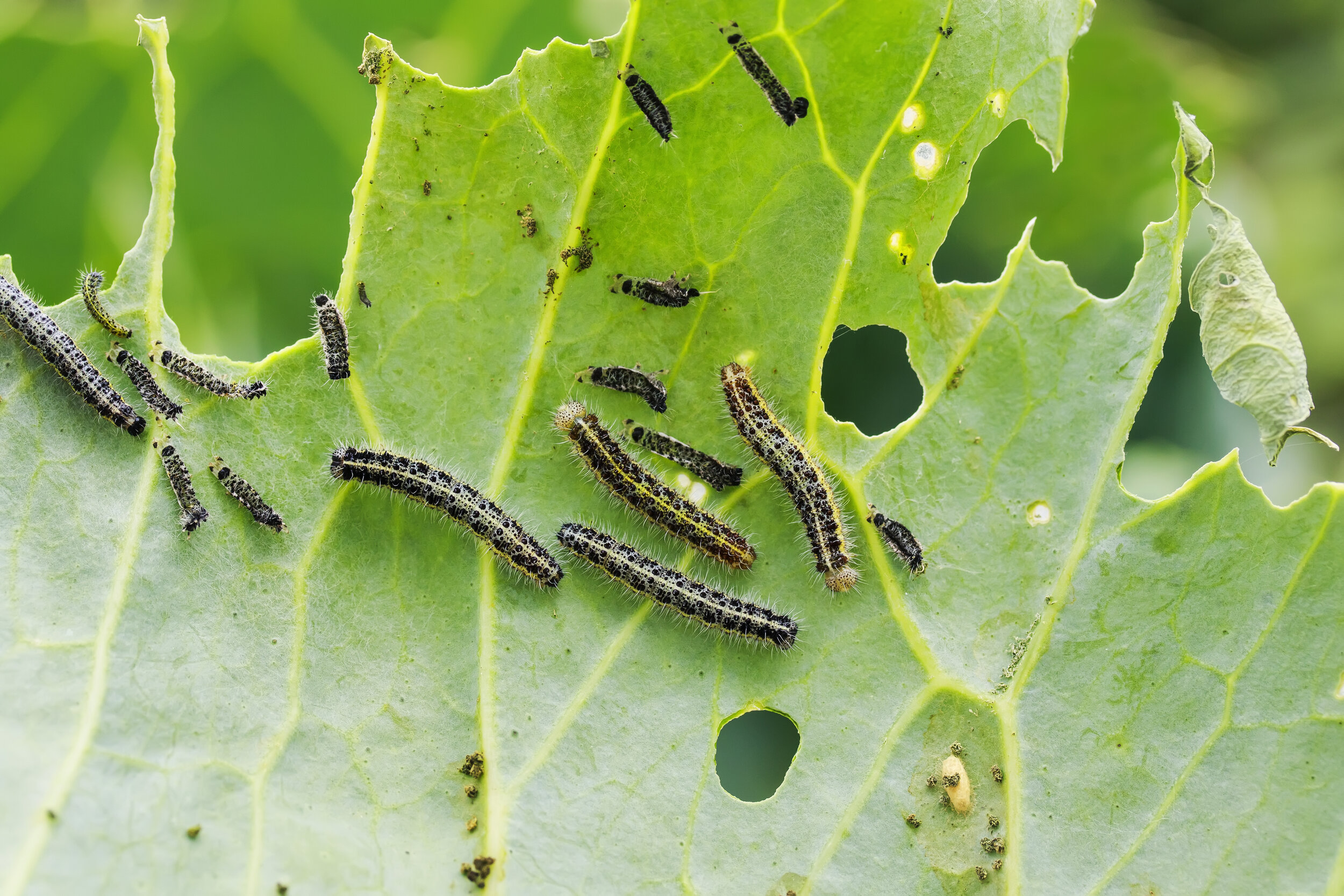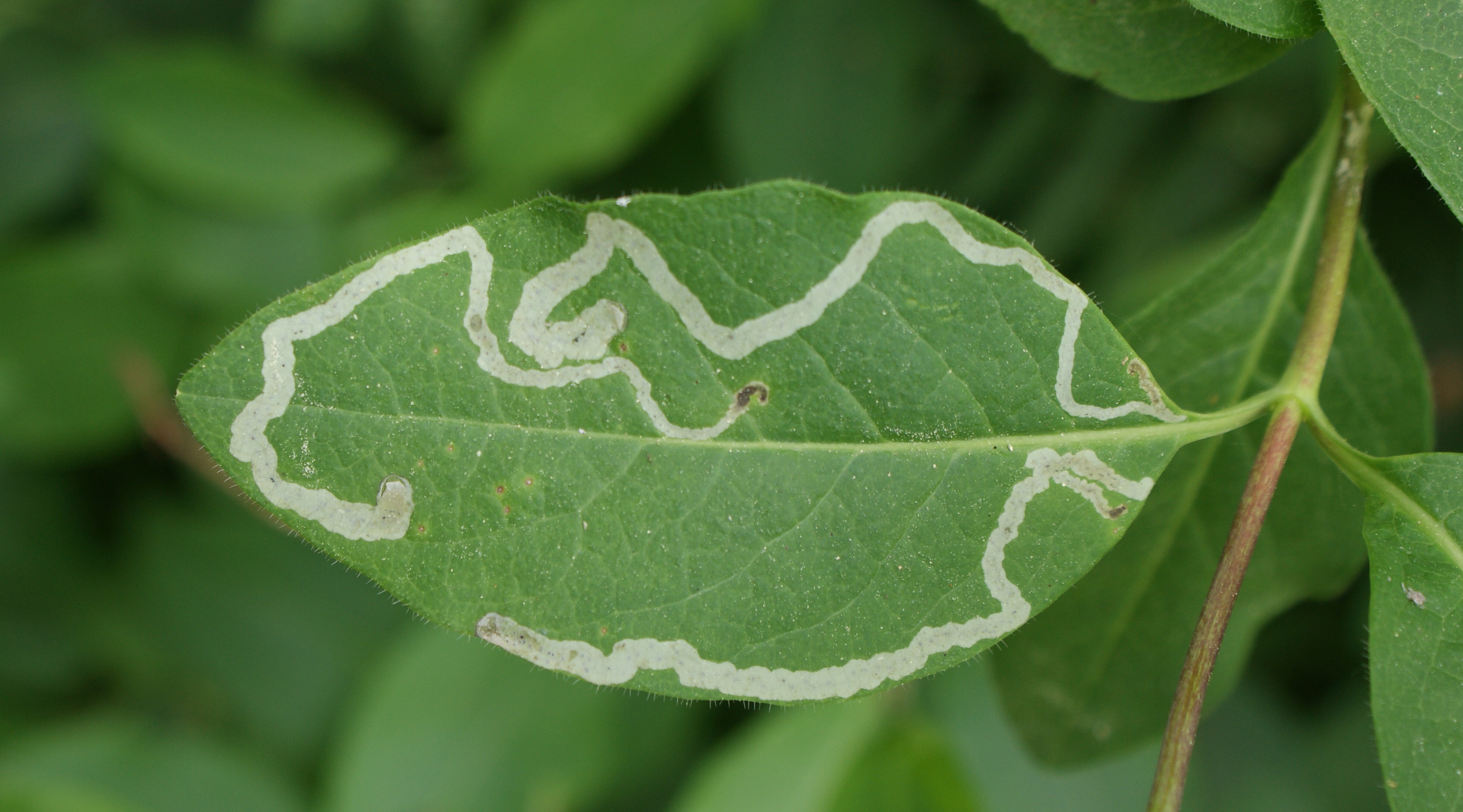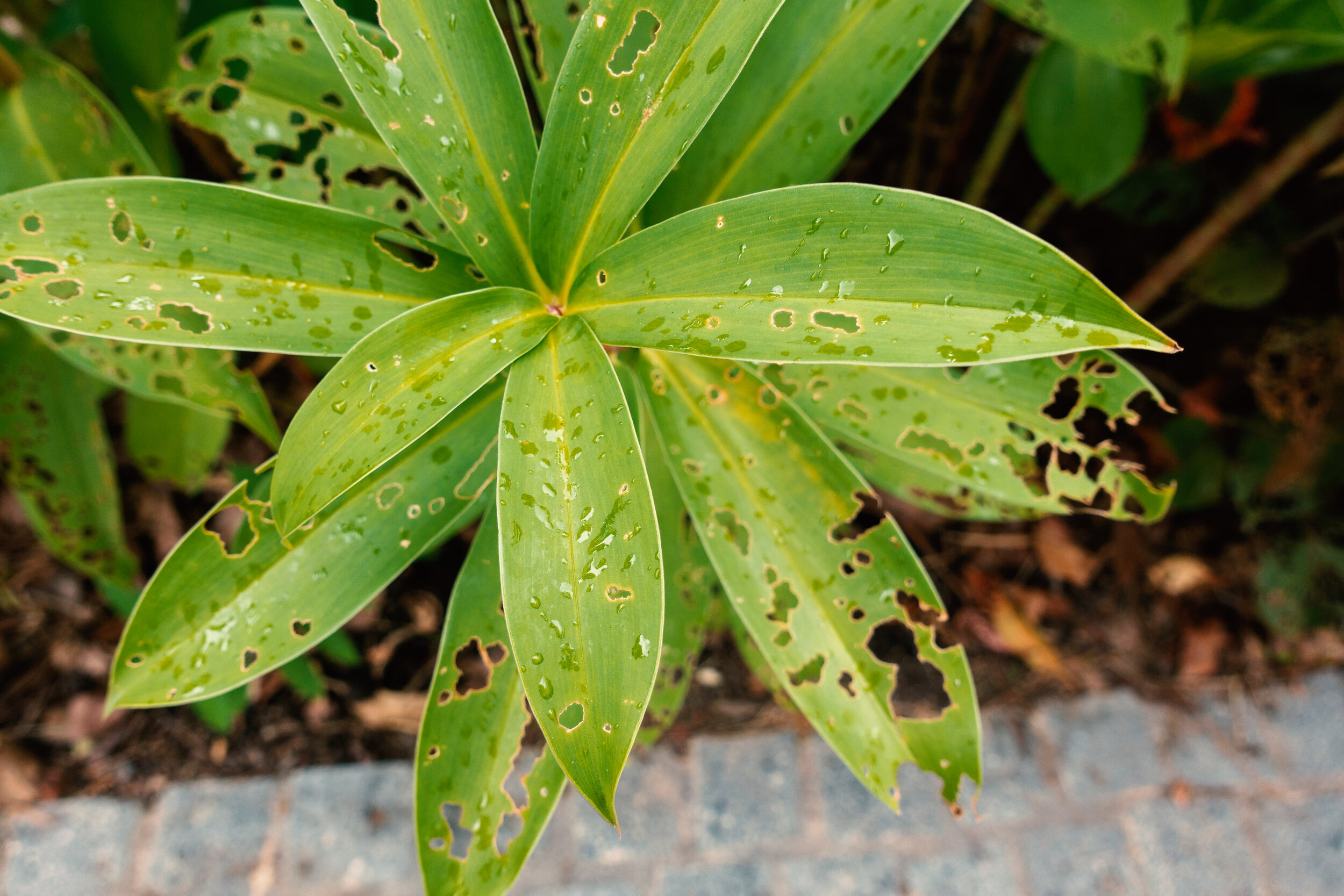What are larvae?
Caterpillars and larvae are common pests that can seriously damage plants. Caterpillars often munch on leaves, creating unsightly holes and reducing the plant's ability to photosynthesize. Larvae, including those from beetles and flies, can affect different parts of the plant: some feed on roots, causing stunted growth, while others create tunnels inside leaves, leading to unsightly blemishes. Keeping an eye out for these pests and taking action early can help protect your plants from extensive damage.
Symptoms
Large holes or 'bites' taken out of the leaves
Leaves that look lacey or skeletonized
Rolled up leaves are usually a sign of caterpillars beginning to pupate on the plant
Irregular tunnels in the leaf tissue are a sign of leaf mining larvae
Small black spheres appearing on the leaves (bug poo!)

What to do now?
The easiest and fastest way to control an infestation is to manually remove the larvae and place them somewhere else. They can often be found under the leaves or along the stems.
If it's leaf miners that have infested your plant you'll need to squash the larvae inside the leaf or remove the leaf completely
Spray the plant with a strong jet of water to dislodge any caterpillars from the plant. Be careful not to damage the foliage or overwater your plant by doing this.
In more serious cases
There are different types of beneficial bacteria you can apply to the foliage to target larvae. These bacteria are specifically harmful to larvae and won’t affect other insects. Keep in mind though, a few caterpillars on your plant are just part of a healthy ecosystem.
If this doesn't work or if the infestation is severe, you can always use traps, barriers and repellents that are specialized for keeping larvae away. In worst-case scenarios, there are many different types of effective pesticides.

Common questions
What do they eat?
This depends on the exact type of larvae, but they typically feed on the leaves of your plants, although they may also eat fruits or other parts. Some species accept a wide range of host plants while others are species specific.
What kind of barrier can I use to prevent them?
In order to prevent an infestation from taking hold in the first place, you can use an insect barrier fabric. This will prevent adult moths and butterflies from laying eggs on your plants.
How regularly should I check my plant for larvae?
If you want to be really diligent (and if your plants are outside) then it may be worth the trouble to quickly check your plants with each watering during the summer months. This is the easiest way to spot a new infestation threat early - making it easier to prevent. However, if checking every day feels excessive, then around once a week should also be fine. This way you can also find other potential issues early on. The key is early treatment!
How long do they live?
The length of this stage of an insect's life cycle depends on the exact type of insect, and can vary greatly. They are a threat to plants as they consume a lot of food in order to produce the energy needed to transition into their adult form.
Can I prevent this from happening in the future?
Always quarantine new plants if possible to avoid introducing pests into your houseplant collection - it’s always easier to prevent an infestation than to remove an already-existing infestation. While your plant is isolated, check it regularly for signs of pests. It may take several weeks to ensure that a plant is completely pest-free.
Caterpillars rarely have more than one generation in indoor conditions, they're most commonly found outdoors but might be brought in with a plant by accident.
